Thoughts on Transferware and Flow Blue
For those of you looking to incorporate antique transferware or flow blue into the design of your home. I’ve been in love with this style and color palette since I moved to NYC and we had our first apartment. When I go into an antique store, I almost always buy transferware! It’s so classic and never goes out of style. Each item has a story in the images and all sorts of imperfections that show the human hand that went into making it. If a piece is yellowed and cracked, I love it even more. The older it looks, the better.
We have an antique and vintage section in our shop and we often carry these items. You have to be inventive when thinking about how to use them. Especially because they are so old (over 100 years) they can be damaged and need special consideration. The materials they used 100 years ago to make these items contained materials we would not use today (some of the glazes had lead in them). Never fear, there are so many wonderful ways to use these beautiful items that don’t include eating off of them.
Collecting of transferware and flow blue can get very detailed. There were over 1,500 patterns and many manufactures in England. Then the color ways. Some people only collect certain color ways which can range from dark blue, to light blue, dark purple to light purple and shades of green.
A Bit of History about Transferware and Flow Blue
Transferware gets its name from the concept of ‘transferring’ art onto a ceramic object. Previous to transferware, if you wanted a decorative plate, it was generally hand painted. As you can imagine this was expensive and was only for the upper class. There was a demand in 1750s England for something more affordable. Transferware was printed patterns using copper plates (same process that was used for books) and were transferred onto each item saving lots of time over hand painting. Therefore, it was more affordable. You can see a bit of the overlap of the pattern being transferred if you look closely.
If you see a blue and white dish where the transferware looks a bit blurry, it’s called Flow Blue. The same transferware process was used, however an additive was put into the kiln to make the pattern softer and blur. These pieces date to about 1820 and were widely sold in America.
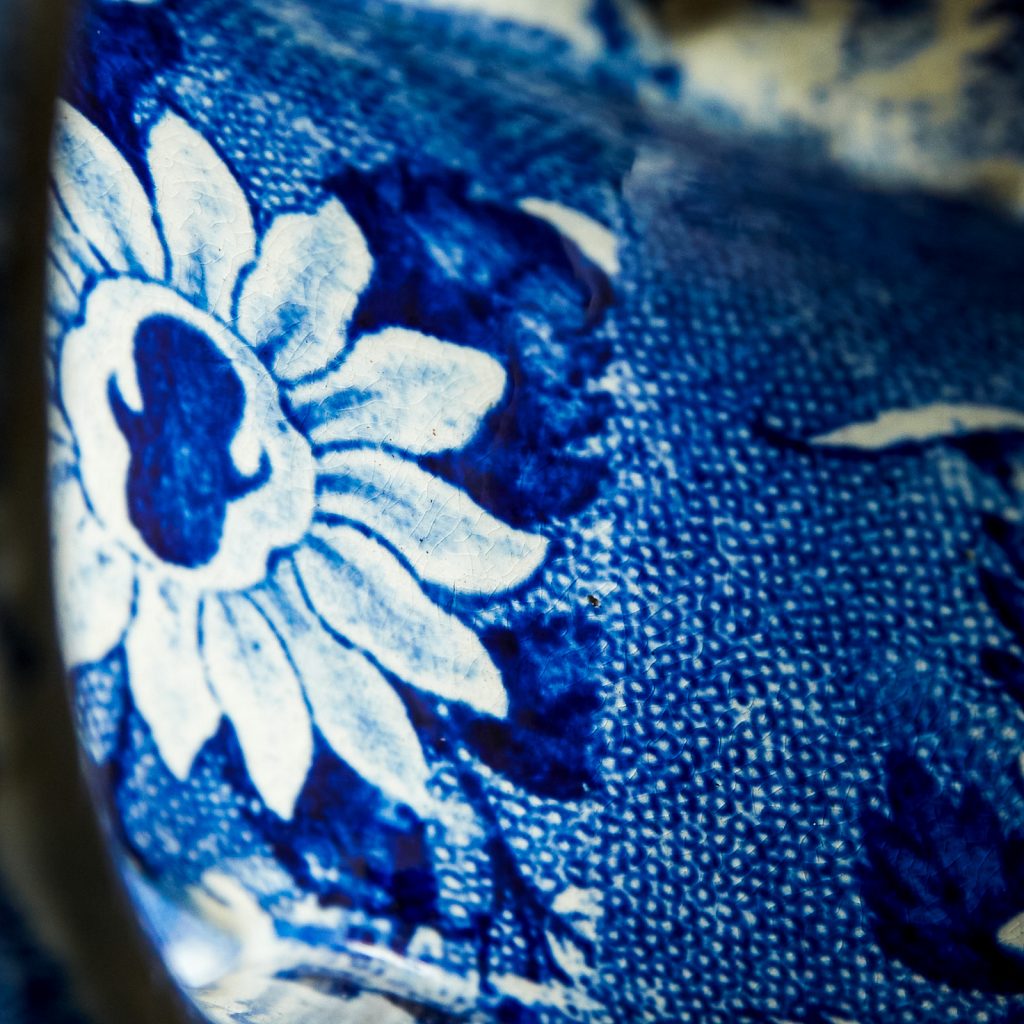
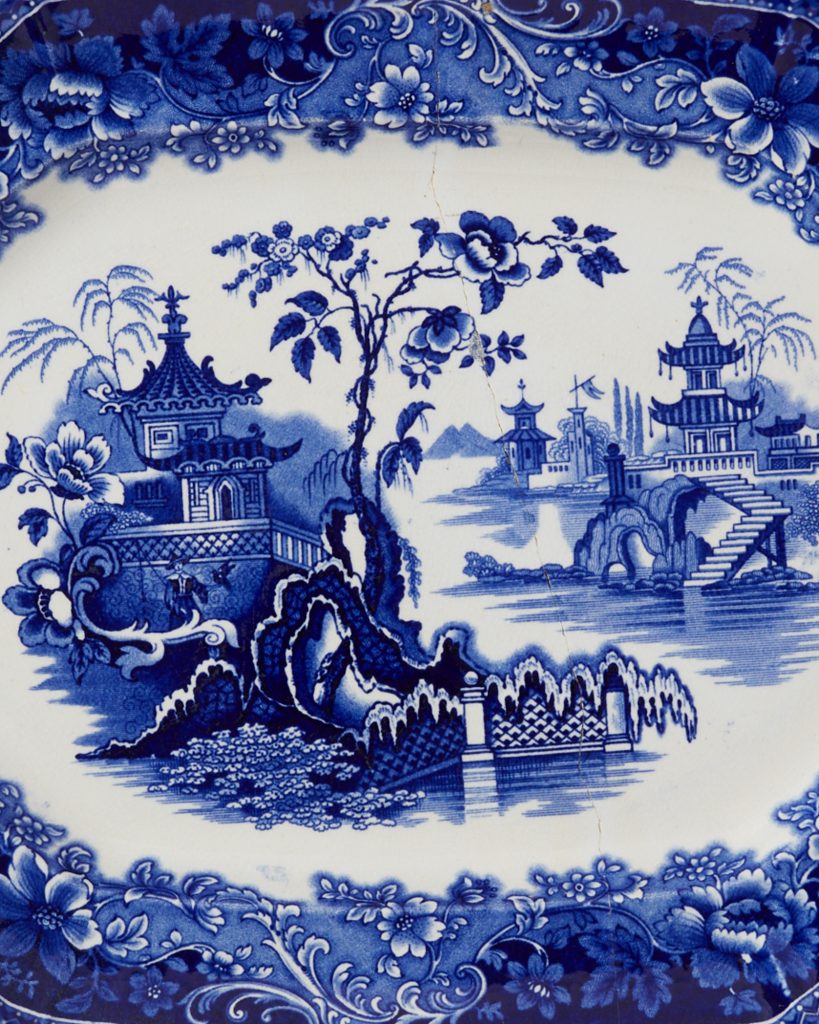
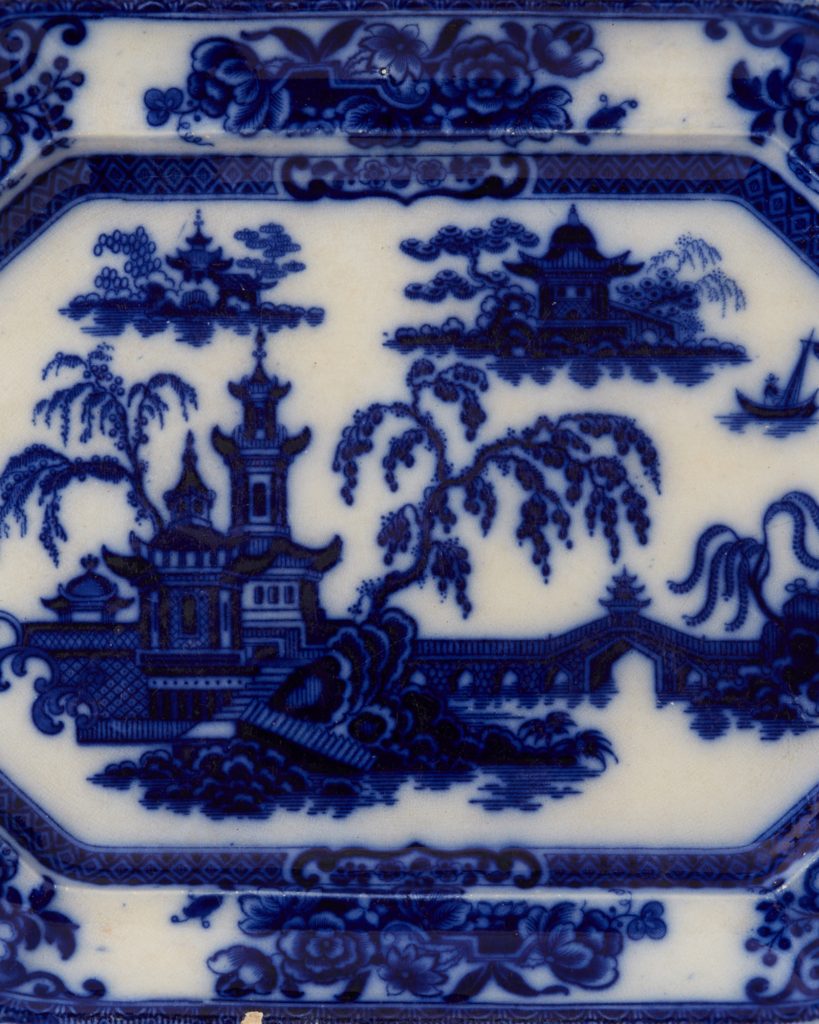
Another layer of design for these objects is the patterns. There are over 1,500 patterns and some popular ones that many manufactures made, like Blue Willow. You can do a deep dive to see if you want to collect a certain pattern or even a specific color way. Some of the colors have nicknames, for instance purple is called Mulberry. Knowing the names of the items you love will help with internet searches when you want to grow your collection.
How to Incorporate these Items into Your Everyday Life
There are so many considerations when looking at each item – sometimes condition will dictate how an item will be used. For instance a beautiful platter might have a crack down the center and not be suitable for food. You can still hang it on the wall as a piece of art, or use a plate stand and to showcase the platter upright like a piece of art. I love a good list, here’s what I look for:
- Cracks in the glaze called crazing
- Cracks in the item, sometimes glued back together
- Repairs, some are so good you can barely see them
- Chips in the corners or sharp edges
- Loose handles, the handle might have cracked but not fallen off
- Water tightness on vessels with cracks
With an item that’s over 100 years old, I expect to see some age. I actually like it because it sends a message of the objects previous life. You can buy lots of these patterns new, however they are mass produced and don’t have the same character as an antique piece.
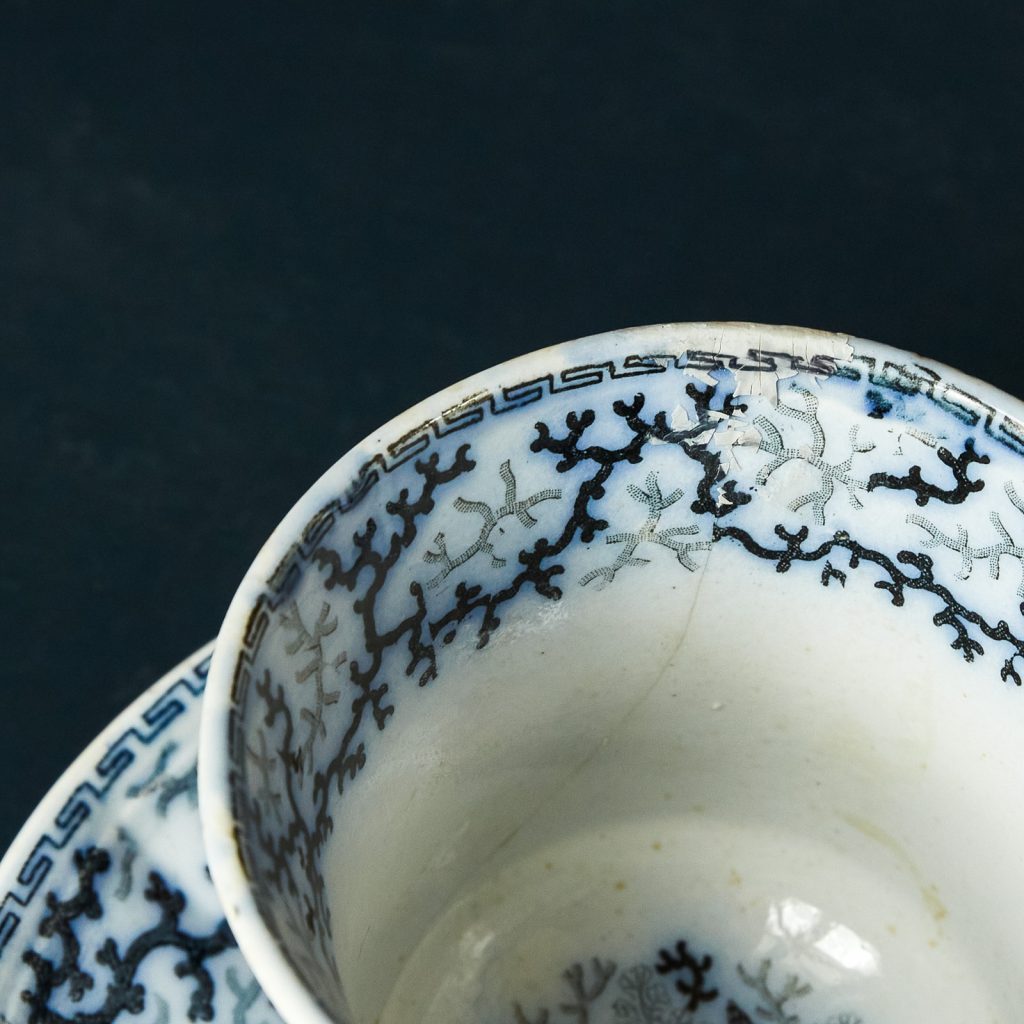
A Note about the Glazing and Lead
I want to be very clear in this section, this is my opinion. I’m not an expert – I know it is an industry concern and wanted to address it. One question I’m always asked is about lead in the glazing. Lead was used pretty regularly in lots of products and is in the glazing of a lot of older ceramics. It’s still used today in ceramics that are dinnerware and cooking items. If you’re concerned about this, please do your own research based on your comfort level. The one consideration I always make is the idea of the double standard. Are we treating older items different than newer items, simply because we think the newer ones are better? New ceramics have high lead levels too (an NPR article on the subject). From my understanding, it has to do with the amount of lead in the glaze (high or safe low levels).
For instance it wasn’t until 1978 that lead was removed from paint in the U.S. That was during my lifetime! Is lead bad, yes, for sure. I don’t freak out about it and try to have a common sense approach. Because we’re renovating an old house, I had my blood tested for a baseline reading when we first moved in, and have a blood test every year. It’s all good. You should have and know this information about lead in antiques if you are a collector. Even if you don’t want to eat off older plates, there are lots of wonderful ways to incorporate them into your home. Do what’s right for you and your family.
How to use transferware in your home
This is the fun part! Here’s some ideas on how you can use transferware in your day-to-day life. I’ll share how we use antique items in our home.
The Dinner Party
We do eat off our transferware, however it’s not my everyday serveware. I use it for special occasions or dinner parties. I have a common sense approach and some best practices. We plate food and serve it right away. I don’t store food on antique platters or plates (we use modern glass containers).
The Cheese Board
This is one of my favorite food moments where you can show some real style and personality. A beautiful board, layered with transferware is a luxurious moment. If you don’t want to eat off antique plates, layer with parchment paper or use for an olive pit discard container. Be creative!
Small Vessels Around the House
That little bit of change in your pocket, keys, sugar packets, earrings, etc. I use a little container to hold all my skin care samples in the bathroom. So handy! The bathroom is one of the easiest places to incorporate little dishes.
Hanging Plates and Platters on the Wall
I haven’t done this yet because I’m saving it for our kitchen and mud room. I have seen interiors done so well with transferware with as art on the wall or as display in a closed cabinet. Take a break from picture frames and hang some platters on the wall!
I even made a Pinterest board with lots of ideas for decorating with transferware and flow blue.
Unconventional Flower Vessels
I have some old tea pots I use for flowers. One of them doesn’t hold water because of so many cracks (I still love it!). So I used dried flowers and it’s just as pretty. This is a wonderful way to recycle an object that’s lost its original function. The best form of recycling is to continue using what you have rather than throwing it away.
Display in a Cabinet
Showcasing a collection behind a glass cabinet door looks so great! You can really style the objects tightly and don’t have to worry about dusting too much.
I hope you have lots of ideas on how to use transferware! There are some beautiful items in the sale and I can’t wait to see where they find their next home.
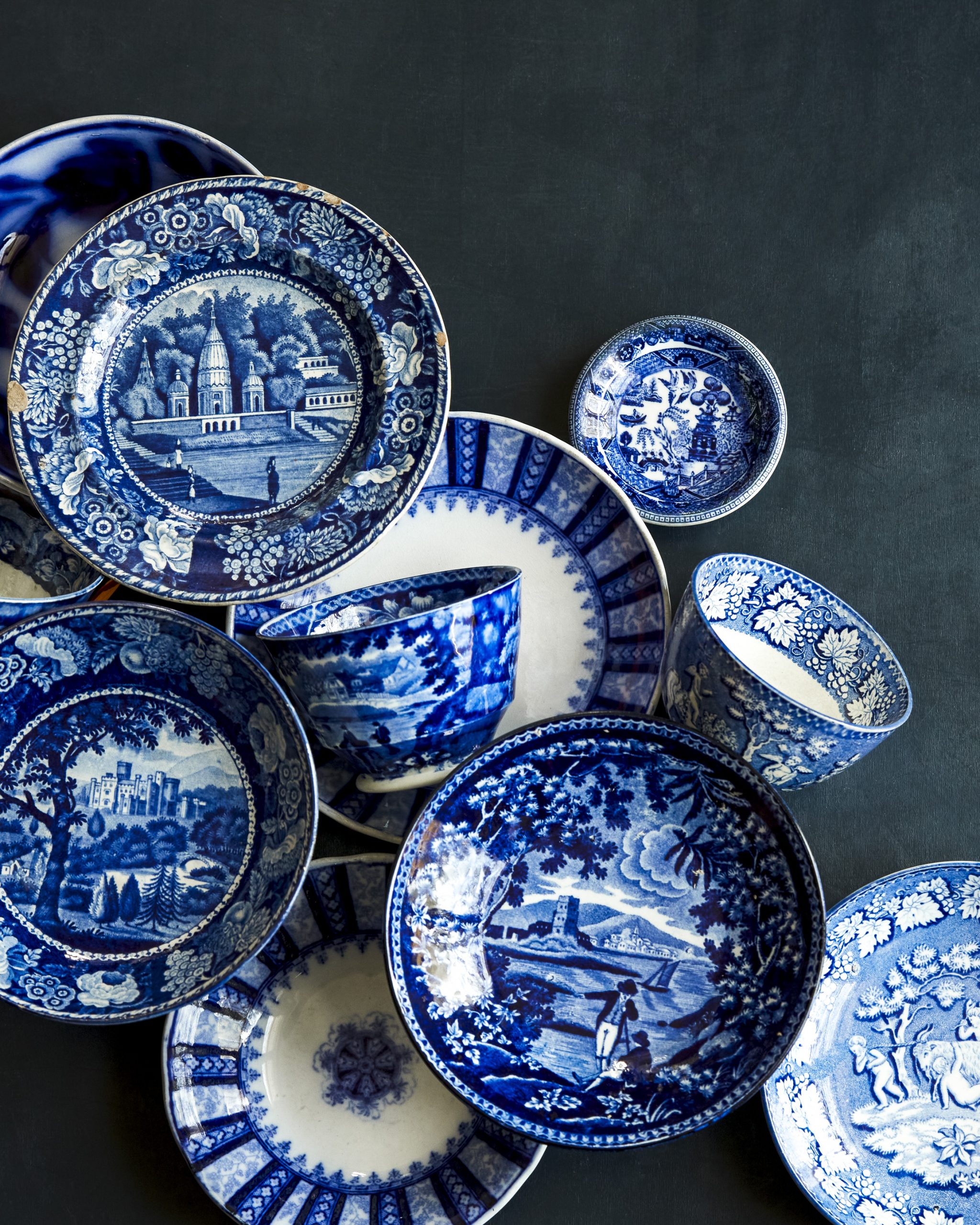

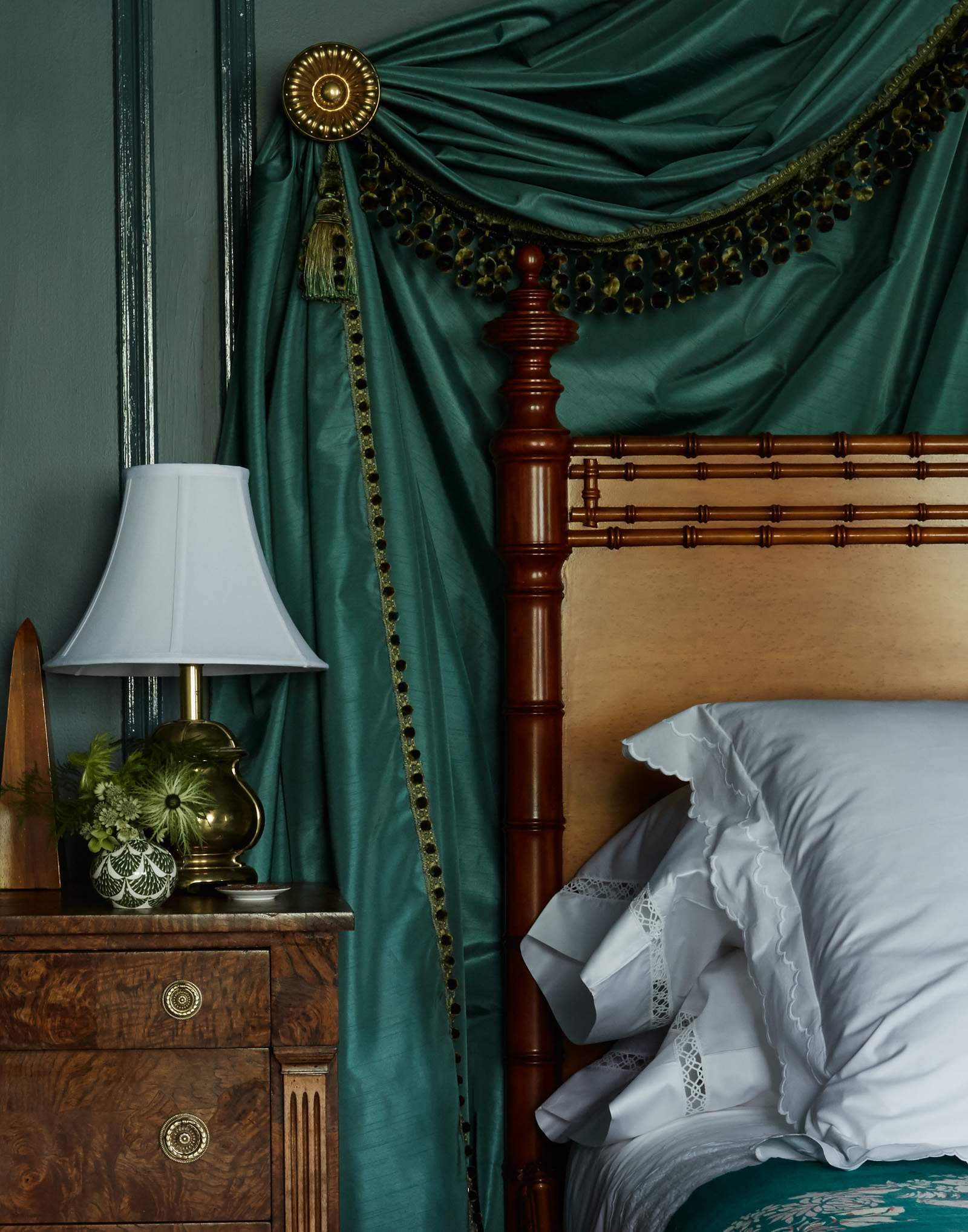

+ Show / Hide Comments
Share to: